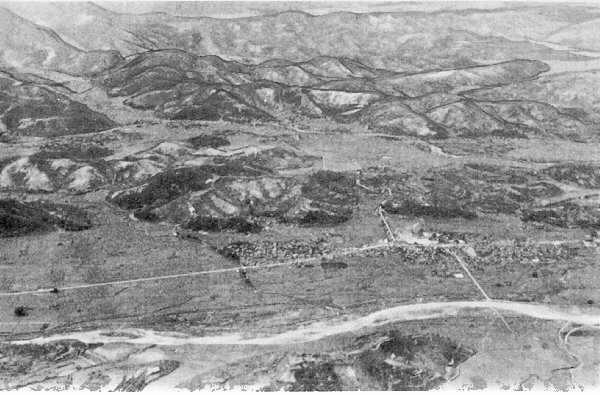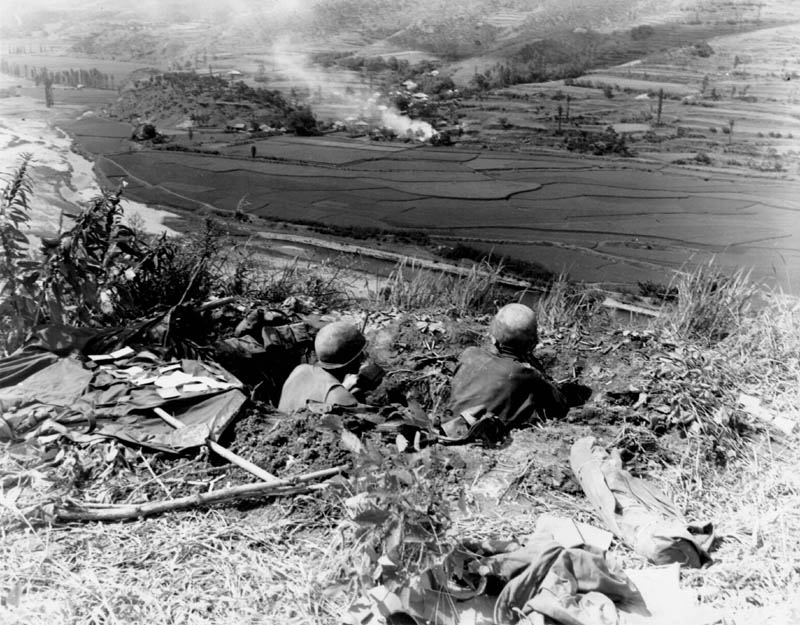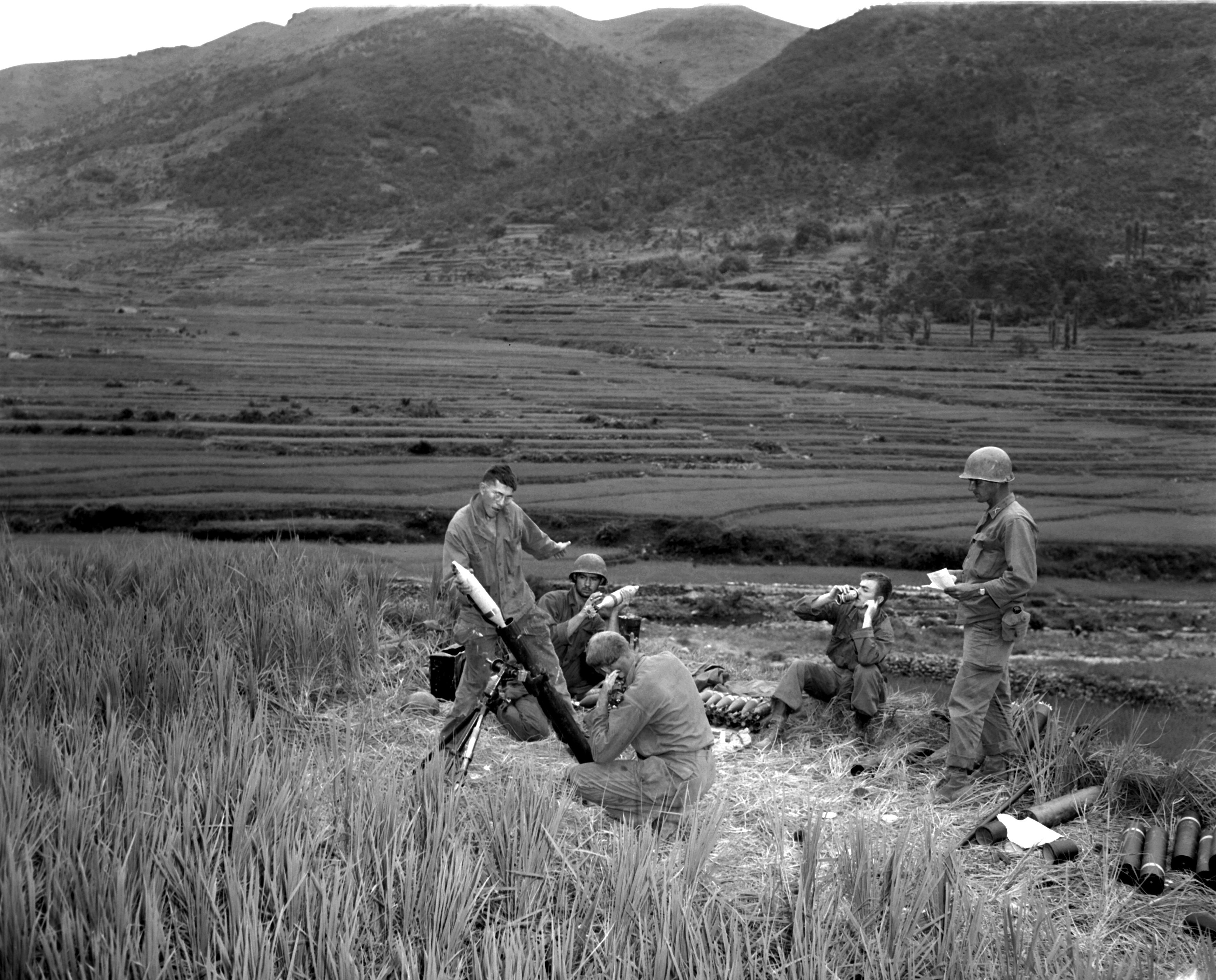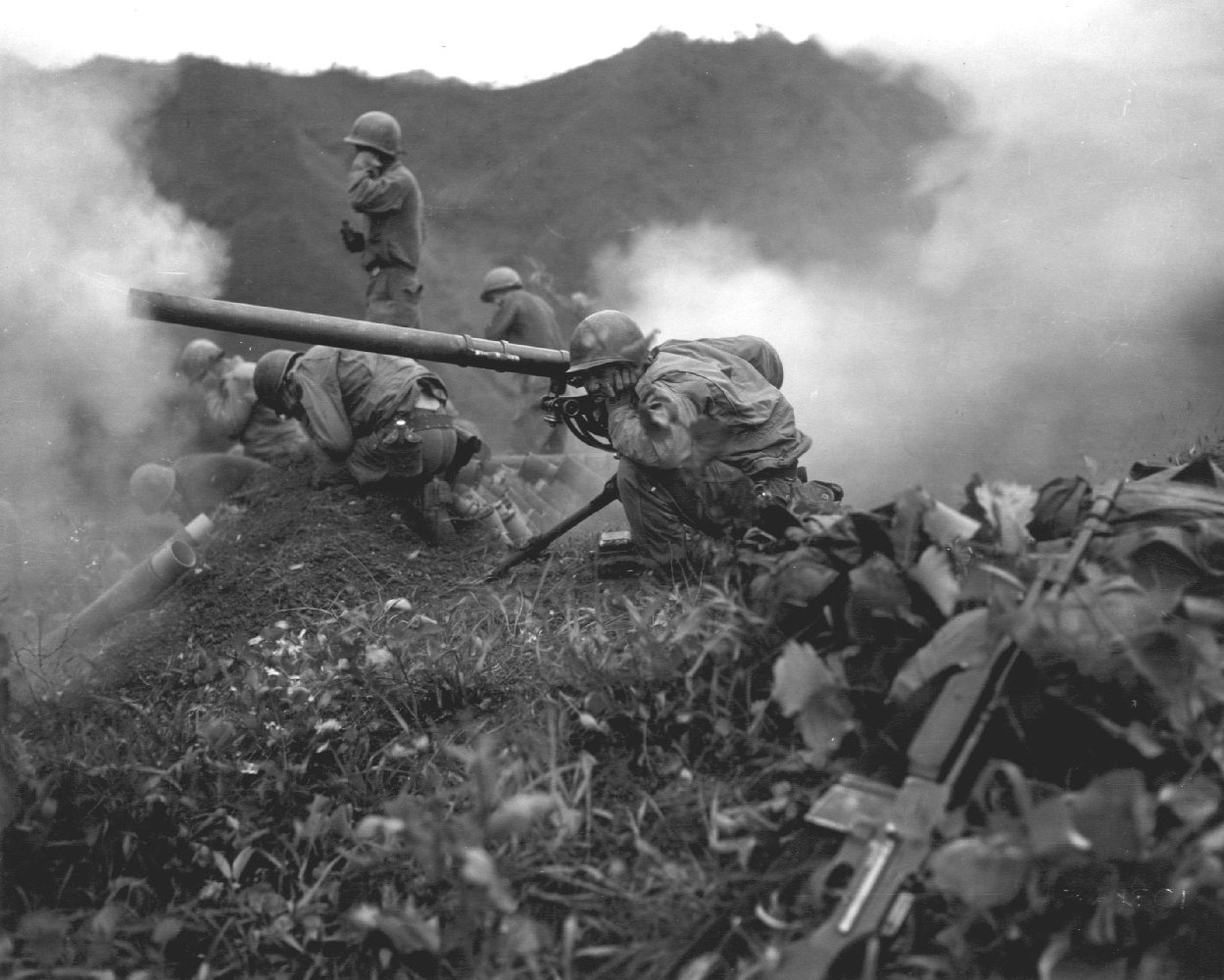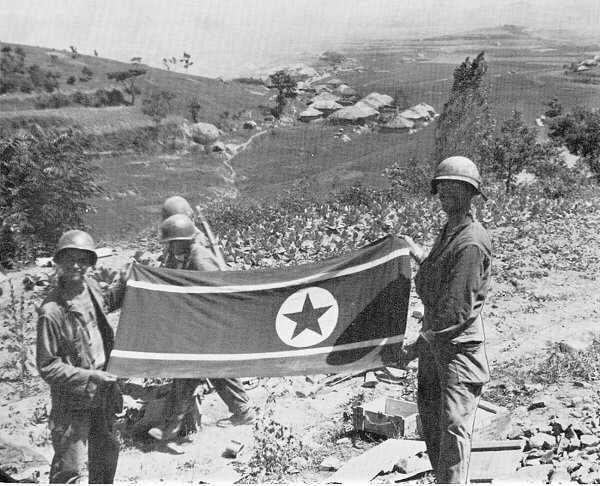|
Pang Ho-san
Pang Ho-san ( ko, 방호산 zh, 方虎山; 1916–unknown) was a communist anti-Japanese activist and general of the Democratic People's Republic of Korea. Biography Pang was born in North Hamgyong Province in 1916. Immediately after the Mukden Incident, he joined the guerrillas in Mishan County, Heilongjiang Province, the predecessor of the 4th Army of the Northeast Anti-Japanese United Army in China and started an Korean independence movement, anti-Japanese movement. After coming to the coast in 1939, he completed the Northeast cadre training class at the Anti-Japanese Military Administration University in 1940. Become a member of the 1st Guide. In November 1945, under the direction of the Communist Party of China, he moved to the northeast region and worked as a political member of the 1st Zone of the Northeast Korean Volunteer Army, strengthening the army and protecting Koreans in the area of South Manchuria. From 1945 to 1948, he participated in the Chinese Civil War, a ... [...More Info...] [...Related Items...] OR: [Wikipedia] [Google] [Baidu] |
Daejang
(; ja, 将, Shō; ) is the rank held by general officers in some East Asian militaries. The ranks are used in both the People's Republic of China and the Republic of China on Taiwan. The People's Liberation Army and the People's Armed Police use three levels at present while the Republic of China Armed Forces use four. In both North and South Korea the rank is also used. Chinese variant People's Liberation Army The same rank names are used for all services, prefixed by ''haijun'' () or ''kongjun'' (). Under the rank system in place in the PLA in the era 1955–1965, there existed the rank of () or Grand General. This rank was awarded to 10 of the veteran leaders of the PLA in 1955 and never conferred again. It was considered equivalent to the Soviet rank of (Army General) which is generally considered a five-star rank, although the insignia itself had only four. The decision to name the equivalent rank when it was briefly re-established in 1988-1994 was likely due to a ... [...More Info...] [...Related Items...] OR: [Wikipedia] [Google] [Baidu] |
Battle Of Gorangpo
The Battle of Gorangpo was one of a series of coordinated attacks beginning on 25 June 1950 that marked the beginning of the Korean War. Order of battle Democratic People's Republic of Korea * 1st Infantry Division - Brigadier General Choe Kwang ** 1st Infantry Regiment - Colonel Hwang Seok ** 2nd Infantry Regiment - Colonel Kim Yang-choon ** 3rd Infantry Regiment - Senior Colonel Lee Chang-kwon ** Artillery Regiment - Colonel Hyun Hak-bong * 6th Infantry Division - Brigadier General Bang Ho-san ** 13th Infantry Regiment - Colonel Kim Hoo-jin ** 14th Infantry Regiment - Colonel Han Il-rae ** 15th Infantry Regiment - Colonel Kim Hyun-ki ** Artillery Regiment - Senior Colonel Lim Hae-min Republic of Korea * 1st Infantry Division - Colonel Paik Sun-yup Paik Sun-yup (; November 23, 1920 – July 10, 2020) was a South Korean military officer. Paik is best known for his service during the Korean War, for being the first four-star general in the history of the South Korean m ... [...More Info...] [...Related Items...] OR: [Wikipedia] [Google] [Baidu] |
Mukden Incident
The Mukden Incident, or Manchurian Incident, known in Chinese as the 9.18 Incident (九・一八), was a false flag event staged by Japanese military personnel as a pretext for the 1931 Japanese invasion of Manchuria. On September 18, 1931, Lieutenant Suemori Kawamoto of the Independent Garrison Unit of the 29th Japanese Infantry Regiment () detonated a small quantity of dynamite close to a railway line owned by Japan's South Manchuria Railway near Mukden (now Shenyang). The explosion was so weak that it failed to destroy the track, and a train passed over it minutes later. The Imperial Japanese Army accused Chinese dissidents of the act and responded with a full invasion that led to the occupation of Manchuria, in which Japan established its puppet state of Manchukuo six months later. The deception was exposed by the Lytton Report of 1932, leading Japan to diplomatic isolation and its March 1933 withdrawal from the League of Nations. The bombing act is known as the Liutiao ... [...More Info...] [...Related Items...] OR: [Wikipedia] [Google] [Baidu] |
North Hamgyong Province
North Hamgyong Province (Hamgyŏngbukdo, ) is the northernmost province of North Korea. The province was formed in 1896 from the northern half of the former Hamgyong Province. Geography The province is bordered by China (Jilin) on the north, South Hamgyong on the southwest and Ryanggang on the west. On the east is the Sea of Japan. The province is home to the Musudan-ri rocket launching site and the Hoeryong concentration camp. In 2004, Rason was reabsorbed back into the province and since 2010, Rason is again a Directly Governed City. Economy In critical studies of North Korea, North Hamgyong has a reputation as a neglected and underdeveloped region even by the country's standards. It was where the 1990s famine hit hardest, and food shortages persist even in the 2020s. The majority of North Korean defectors who live in South Korea came from the province after crossing the relatively shallow Tumen River into China. Therefore the conditions of the province, which analyst Fyodor ... [...More Info...] [...Related Items...] OR: [Wikipedia] [Google] [Baidu] |
Democratic People's Republic Of Korea
North Korea, officially the Democratic People's Republic of Korea (DPRK), is a country in East Asia. It constitutes the northern half of the Korean Peninsula and shares borders with China and Russia to the north, at the Yalu (Amnok) and Tumen rivers, and South Korea to the south at the Korean Demilitarized Zone. North Korea's border with South Korea is a disputed border as both countries claim the entirety of the Korean Peninsula. The country's western border is formed by the Yellow Sea, while its eastern border is defined by the Sea of Japan. North Korea, like its southern counterpart, claims to be the legitimate government of the entire peninsula and adjacent islands. Pyongyang is the capital and largest city. In 1910, Korea was annexed by the Empire of Japan. In 1945, after the Japanese surrender at the end of World War II, Korea was divided into two zones along the 38th parallel, with the north occupied by the Soviet Union and the south occupied by the United ... [...More Info...] [...Related Items...] OR: [Wikipedia] [Google] [Baidu] |
Battle Of Heartbreak Ridge
The Battle of Heartbreak Ridge (; french: Bataille de Crèvecœur), also known as the Battle of Wendengli (), was a month-long battle in the Korean War which took place between September 13th and October 15th, 1951. After withdrawing from Bloody Ridge, the Korean People's Army (KPA) set up new positions just away on a long hill mass. If anything, the defenses were even more formidable here than on Bloody Ridge. The Battle of Heartbreak Ridge was one of several major engagements in the hills of North Korea a few miles north of the 38th Parallel (the pre-war boundary between North and South Korea), near Chorwon. For the Chinese, this battle is often confused with the Battle of Triangle Hill, which occurred a year later. Background During the battle of Bloody Ridge, U.S. Eighth Army commander General James Van Fleet had submitted an outline plan, called Talons, to United Nations commander General Matthew Ridgway envisioning an advance of to remove the sag in the Eighth ... [...More Info...] [...Related Items...] OR: [Wikipedia] [Google] [Baidu] |
Battle Of Haman
The Battle of Haman was one engagement in the larger Battle of Pusan Perimeter between United Nations Command (UN) and North Korean forces early in the Korean War from August 31 to September 19, 1950, in the vicinity of Haman County in South Korea. The engagement ended in a victory for the UN after large numbers of United States Army (US) and Republic of Korea Army (ROK) troops repelled a strong Korean People's Army (KPA) attack on the town of Haman. Operating in defense of Masan during the Battle of Masan, the US 24th Infantry Regiment was stretched along a long line on a ridge to the west of the town, at Haman. When the KPA 6th Division attacked the town, the US troops fought to repel their advance in a weeklong battle in which the 24th Infantry performed poorly, and other US reinforcements were brought in to assist in fighting off the attack. Background Pusan Perimeter From the outbreak of the Korean War and the invasion of South Korea by the North, the KPA had enjoyed ... [...More Info...] [...Related Items...] OR: [Wikipedia] [Google] [Baidu] |
Battle Of Pusan Perimeter
The Battle of the Pusan Perimeter ( ko, 부산 교두보 전투) was a large-scale battle between United Nations Command (UN) and North Korean forces lasting from August 4 to September 18, 1950. It was one of the first major engagements of the Korean War. An army of 140,000 UN troops, having been pushed to the brink of defeat, were rallied to make a final stand against the invading Korean People's Army (KPA), 98,000 men strong. UN forces, having been repeatedly defeated by the advancing KPA, were forced back to the "Pusan Perimeter", a defensive line around an area on the southeastern tip of South Korea that included the port of Busan. The UN troops, consisting mostly of forces from the Republic of Korea Army (ROKA), United States, and United Kingdom, mounted a last stand around the perimeter, fighting off repeated KPA attacks for six weeks as they were engaged around the cities of Taegu, Masan, and Pohang and the Naktong River. The massive KPA assaults were unsuccessful in for ... [...More Info...] [...Related Items...] OR: [Wikipedia] [Google] [Baidu] |
Battle Of Battle Mountain
The Battle of Battle Mountain was an engagement between United Nations Command (UN) and North Korean forces early in the Korean War from August 15 to September 19, 1950, on and around the Sobuk-san mountain area in South Korea. It was one of several large engagements fought simultaneously during the Battle of Pusan Perimeter. The battle ended in a victory for the UN after large numbers of United States Army (US) and Republic of Korea Army (ROK) troops were able to prevent a Korean People's Army (KPA) division from capturing the mountain area. Operating in defense of Masan, the US 25th Infantry Division placed its 24th Infantry Regiment and 5th Infantry Regiment on Sobuk-san to defend its two peaks, P'il-bong and Hill 665, which would later be known as "Battle Mountain." What followed was a month-long struggle with the KPA 6th Division, in which Battle Mountain changed hands 20 times. During the deadlock, neither side was able to secure a definite victory in capturing ... [...More Info...] [...Related Items...] OR: [Wikipedia] [Google] [Baidu] |
Hadong Ambush
The Hadong Ambush was an engagement between United States and North Korean forces, occurring on July 27, 1950, in the village of Hadong in southern South Korea, early in the Korean War. The fight ended in a North Korean victory following a successful ambush of US forces which resulted in heavy American casualties. The US Army's 3rd Battalion, 29th Infantry Regiment (United States), 29th Infantry Regiment, a newly formed unit consisting mostly of inexperienced new arrivals, was ordered to move to the South Korean village of Hadong to hold the pass there against advancing forces of the North Korean Korean People's Army (KPA). Unprepared for combat, the American forces walked into an ambush in which most of the battalion's command staff was killed in the pass, leaving lower-ranking soldiers to mount a disorganized defence against North Korean troops occupying prepared positions on higher ground. For three hours the battalion fought, pinned in a crossfire by North Korean soldiers on ... [...More Info...] [...Related Items...] OR: [Wikipedia] [Google] [Baidu] |
Battle Of The Notch
The Battle of the Notch was an engagement between United States and North Korean forces early in the Korean War on August 2, 1950 in southern South Korea. The fight ended in a victory for the United States after North Korean forces attempting to assault the US position were blocked and repelled repeatedly, suffering heavy casualties. Reeling from the Hadong Ambush and being driven from the city of Chinju, the United States Army's 19th Infantry Regiment, 24th Infantry Division scrambled to protect the pass into Masan, the final South Korean city before the Naktong River, where the UN was holding its Pusan Perimeter in place. North Korean and US forces unexpectedly ran into one another and a confused battle ensued. American forces were better equipped with heavy weapons and armor thanks to newly arrived equipment in the country, and their better ground during the battle allowed them to repel North Korean advances. The North Korean force eventually withdrew after several unsuccess ... [...More Info...] [...Related Items...] OR: [Wikipedia] [Google] [Baidu] |
Battle Of Nam River
The Battle of Nam River was an engagement between the United Nations Command (UN) and North Korean forces early in the Korean War from August 31 to September 19, 1950, in the vicinity of the Nam River and the Naktong River in South Korea. It was a part of the Battle of Pusan Perimeter, and was one of several large engagements fought simultaneously. The battle ended in a victory for the United Nations after United States Army (US) troops repelled a Korean People's Army (KPA). attack across the river. Positioned in defense of Masan during the Battle of Masan, the US 35th Infantry Regiment, 25th Infantry Division took up positions along the Nam River, one of the many tributaries of the Naktong River on the southern flank of the Pusan Perimeter. The KPA 7th Division crossed the river on August 31, and though the 35th Infantry stemmed the KPA advance, thousands of KPA troops exploited a hole in the line and surrounded the regiment. What followed was an intense battle in which the U ... [...More Info...] [...Related Items...] OR: [Wikipedia] [Google] [Baidu] |




